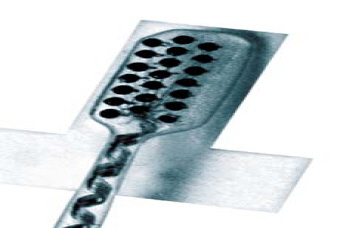|
Auditory Brainstem Implants (ABI):
If the cochlea is severely damaged or absent, or the auditory nerve has been damaged, a standard cochlear implant will not work, as it relies on stimulation of bipolar neurones in the modiolus of the cochlea and a functioning auditory nerve to carry the impulses. In this situation, a brainstem implant may be an option.
The cochlear nuclei in the brainstem have a degree of tonotopical arrangement, and a flat electrode placed in the lateral recess of the fourth ventricle adjacent to the cochlear nuclei or on the surface of the cochlear nuclei can stimulate these, producing a percept of hearing. The receiver/stimulator package and external processor are similar to a conventional cochlear implant.
Patients with Neurofibromatosis type 2 who may eventually end up with total bilateral hearing loss from their tumours or surgery, patients with auditory nerve aplasia, and patients with severe ossification of the cochleas may be candidates for a brainstem implant.
The hearing with brainstem implants is not as good as with cochlear implants, and open set speech discrimination is uncommon. Recent reports suggest some patients can get good results, but for most patients ABIs provide awareness of sound and aid lipreading. However, for these patients there is no alternative.
ABI devices are available from Cochlear, (with 21 active channels)

and from MedEl (with 12 active channels).

The cochlear nuclei contain a number of tonotopic maps at different depths and angles from the surface, and penetrating electrodes are being developed to try and make use of these different maps.
There is no obvious difference in outcomes between different ABI devices.
|
Ear surgery Nose and Sinus Surgery Paediatric ENT Surgery General ENT Throat Problems Hearing Problems Cochlear Implants
|
|

